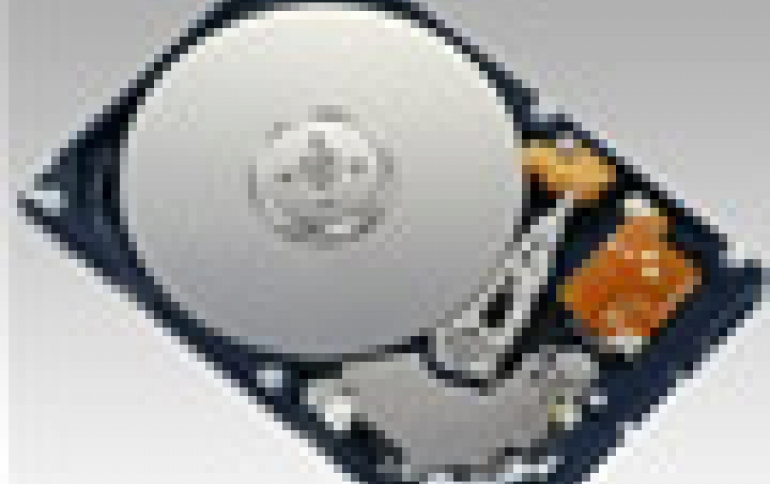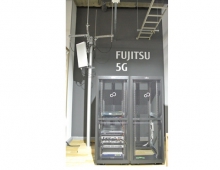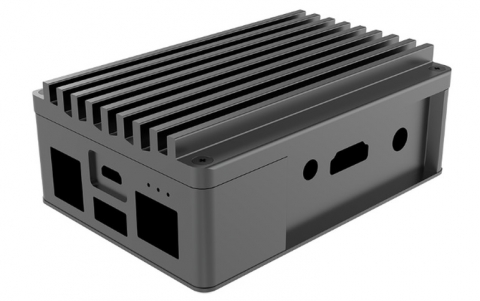
Fujitsu Promises 5TB Hard Drives
Fujitsu claims that it has developed a new media technology that will dramatically increase the areal densities of hard disk media, allowing the development of high capacity hard disk drives.
Fujitsu was able to achieve a one-dimensional array nanohole pattern with an unprecedented 25 nanometer pitch. The achievement was presented at the 10th Joint MMM/Intermag Conference on January 9, 2007 in Baltimore, MD.
This accomplishment came from the joint work of Yamagata Fujitsu Limited, Fujitsu Laboratories Limited and Kanagawa Academy of Science and Technology (KAST). With this latest patterned media announcement, Fujitsu has successfully realized a nanohole pattern with 25 nanometer pitch, a process which will enable one Terabit/in2 recording on HDDs in the future. this is more than five times the density that is available in production hard drives today. Theoritically, a density of 1 Tb/inch2, would translate into 3.5" drives with a capacity of about 5 TB, 2.5" notebook drives with 1.5 TB and 1.8" portable drives with about 500 GB. Seagate is currently holding the record in the areal density in hard disk drives, with 421 Gbits per square inch.
Fujitsu first announced innovations with patterned media recording in June 2005. At that time, advancements were made with the introduction of a process to pre-pit aluminum media, resulting in nanoholes with an extremely dense and ordered structure. In addition, a technique called land/groove texturing allowed for the creation of discrete tracks in which the nanoholes could be formed. This progress in patterned media has enabled the development of high capacity hard disk drives, especially in smaller form factors.
During the MMM/Intermag conference, Fujitsu also revealed a new development involving perpendicular magnetic recording (PMR) read/write operation on random patterned media. With this technology, the soft underlayer (SUL) is used as the PMR media. This progress in patterned media recording closely follows the November 2006 Fujitsu announcement regarding the optical element being developed for thermal assisted recording, another promising advancement for future capacity increases.
The work on nanohole patterned media is supported by the "Research Program on Development of Innovative Technology" of the Japan Science and Technology Agency.
This accomplishment came from the joint work of Yamagata Fujitsu Limited, Fujitsu Laboratories Limited and Kanagawa Academy of Science and Technology (KAST). With this latest patterned media announcement, Fujitsu has successfully realized a nanohole pattern with 25 nanometer pitch, a process which will enable one Terabit/in2 recording on HDDs in the future. this is more than five times the density that is available in production hard drives today. Theoritically, a density of 1 Tb/inch2, would translate into 3.5" drives with a capacity of about 5 TB, 2.5" notebook drives with 1.5 TB and 1.8" portable drives with about 500 GB. Seagate is currently holding the record in the areal density in hard disk drives, with 421 Gbits per square inch.
Fujitsu first announced innovations with patterned media recording in June 2005. At that time, advancements were made with the introduction of a process to pre-pit aluminum media, resulting in nanoholes with an extremely dense and ordered structure. In addition, a technique called land/groove texturing allowed for the creation of discrete tracks in which the nanoholes could be formed. This progress in patterned media has enabled the development of high capacity hard disk drives, especially in smaller form factors.
During the MMM/Intermag conference, Fujitsu also revealed a new development involving perpendicular magnetic recording (PMR) read/write operation on random patterned media. With this technology, the soft underlayer (SUL) is used as the PMR media. This progress in patterned media recording closely follows the November 2006 Fujitsu announcement regarding the optical element being developed for thermal assisted recording, another promising advancement for future capacity increases.
The work on nanohole patterned media is supported by the "Research Program on Development of Innovative Technology" of the Japan Science and Technology Agency.





















